#Nike of Paionios
Explore tagged Tumblr posts
Text


Hanging out at the recently-opened O'Donnell Athenaeum on the campus of UT Dallas, which is the new home of the Crow Museum of Asian Art (though it still retains its old downtown space). Standing at the entrance to the galleries, the object on the left isn't actually part of the Crow's holdings but is on loan from the Modern Art Museum of Fort Worth. It's one of Xu Zhen's pieces where he mashes up Western and Eastern sculpture, in this case the Nike of Paionios with the upside-down body of a bodhisattva. On the right, I like the suspended display cases in the ceramics gallery.
The Crow Museum began as the personal collections of Dallas tycoon Trammell Crow, who has a son named Harlan Crow, but his tastes run more towards collecting Supreme Court Justices and dictator statues instead.
#UTD#UT Dallas#University of Texas at Dallas#Crow Museum of Asian Art#museum#museums#Nike of Paionios#Xu Zhen#Crow Collection#Crow Collection of Asian Art#Dallas#Texas
1 note
·
View note
Text

A marble statue (425-420 BC) of the Greek goddess of victory Nike by Thracian sculptor Paionios is currently in the Archaeological Museum of Olympia, Greece.
7 notes
·
View notes
Text


nike of samothrace // nike of paionios
the other day i went to paint a statue with some friends & it went poorly for me & now i am determined to get the hang of painting statues to make up for that experience
523 notes
·
View notes
Text
Pyeongchang 2018

Obverse: Abstract design resembling ripples in a field of snow. Reverse: Hangul messages "symbolising the effort of athletes from around the world" Edge: words "Olympic Winter Games Pyeongchang 2018" in Korean (stylized) and English
Athens 2004

Obverse: Nike of Paionios with Panathenaic Stadium and the Acropolis of Athens in the background. Reverse: The Olympic Flame, the opening lines of Pindar's Eighth Olympic Ode, and the Athens Games logo
19 notes
·
View notes
Text
Please look at my favorite ancient greek statue



Nike of Paionios, Mende. 425/420 BC
Thank you <3
13 notes
·
View notes
Text
Welterbe (auf)gespürt und (er)fahren – GR – Archäologische Stätte von Olympia
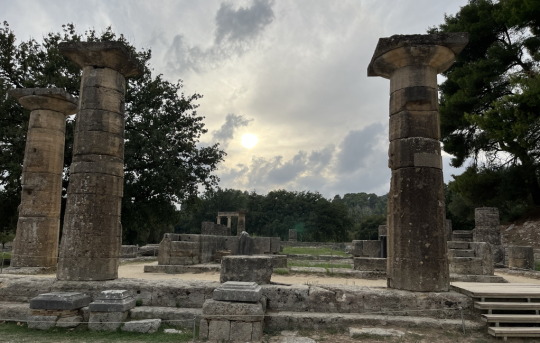
Als zweites Welterbe in Griechenland steht das antike Olympia auf dem Plan. Bis jetzt war mir gar nicht so bewusst, dass das berühmte Stadion nur einen kleinen Teil der Stätte ausmacht und Olympia ein heiliger Ort mit einem beeindruckenden großen Tempelareal war und darin ein Weltwunder der Antike besaß. Die archäologische Stätte von Olympia steht seit 1989 auf der UNESCO-Welterbeliste. Malerisch gelegen in einem Tal auf dem Peloponnes am Zusammenfluss der Flüsse Alpheios und Kladeos war der Ort seit prähistorischer Zeit besiedelt. Im 10. Jahrhundert v. Chr. wurde Olympia zu einem Zentrum der Zeus-Verehrung. Der heilige Hain (Altis) als Zentrum des Heiligtums besaß eine der höchsten Konzentrationen von Meisterwerken der antiken Mittelmeerwelt. Viele gingen verloren, darunter die Kultstatue des Zeus aus Gold und Elfenbein, eines der sieben Weltwunder der Antike. Doch einige Meisterwerke sind erhalten geblieben, wie Bronzen, Skulpturen und Friese aus dem Zeustempel und der berühmte Hermeskomplex von Praxiteles. Große Künstler wie Pheidias haben diese Werke geschaffen und sie zeugen bis heute von deren persönlicher Inspiration und Kreativität. Die Denkmäler von Olympia hatten in der Folge europaweit beträchtlichen Einfluss. Der Zeustempel, erbaut zwischen 470 und 457 v. Chr., war Modell für die großen dorischen Tempel, die in Süditalien und Sizilien errichtet wurden und die um 420 v. Chr. geschaffene Nike von Paionios beeinflusste die neoklassizistische Kunst des 19. Jahrhunderts. Ab 776 v. Chr. wurden in Olympia aller vier Jahre Sportwettkämpfe abgehalten und neben den Tempeln sind die Überreste aller Sportanlagen zu sehen, die dafür errichtet wurden. Hier wurde die olympische Idee geboren, die Olympia zu einem einzigartigen und universellen Symbol für Frieden, Tugend und fairen Wettbewerb machte. Die olympische Palaestra, der Trainingsort der Sportler, zeugt von den Idealen der körperlichen und geistigen Harmonie. Ich bin wegen des starken Gewitters mit der Morgenfähre aus Korfu gestartet und die 400 km bis Olympia ziehen sich, unterwegs begleitet mich weiter der Regen. Endlich klart es auf und ich fahre im Sonnenschein über die beeindruckende große Rio-Andirrio-Brücke auf die Peloponnes-Halbinsel.
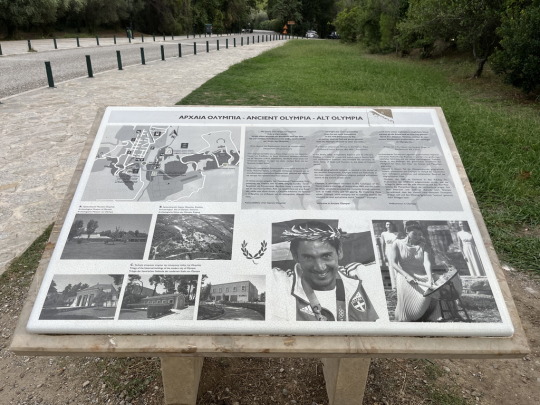
Am Nachmittag komme ich an der antiken Stätte an. Heute gibt es sogar freien Eintritt.
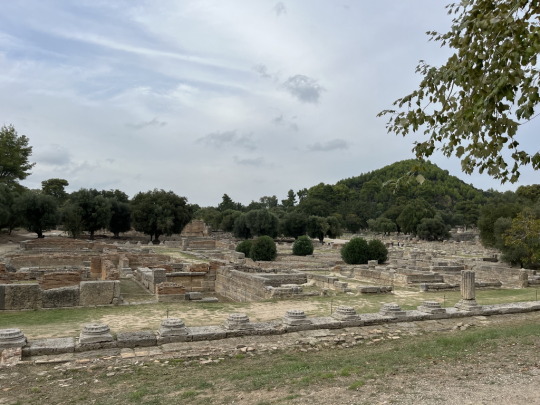

Hier empfängt mich eine grüne Oase, der Fluss ist gesäumt von Schilf und die Büsche blühen. Dann öffnet sich der Blick auf das riesige Areal mit seinen Säulen und Tempelruinen. Die Sonne scheint und ich begebe mich auf meinen Rundgang.




Alles ist gut beschrieben, die vielen Informationen erleichtern die Orientierung und die Vorstellung des ursprünglichen Bauwerkes. Ich komme zunächst zur Palästra, wo sich die Athleten auf die Wettkämpfe vorbereitet haben.
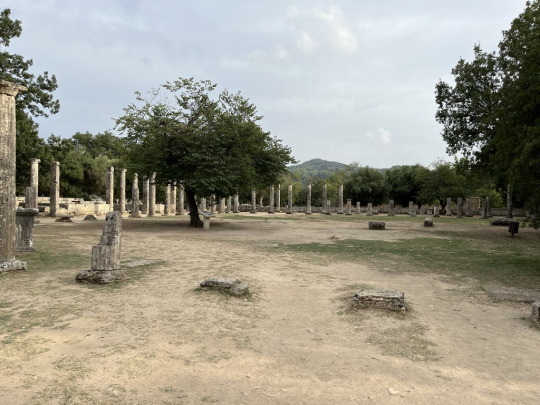
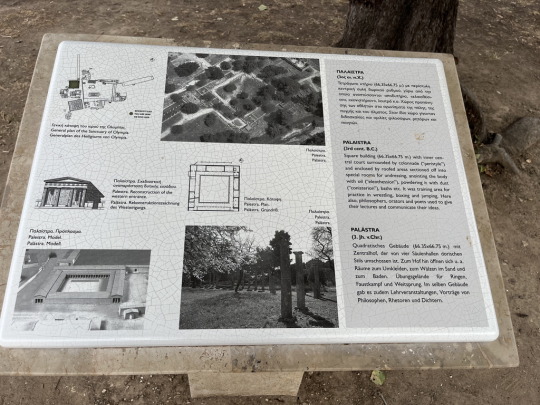
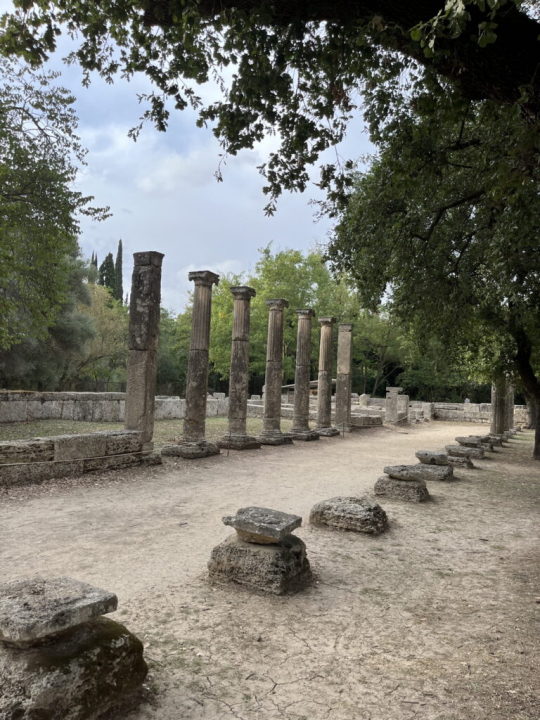
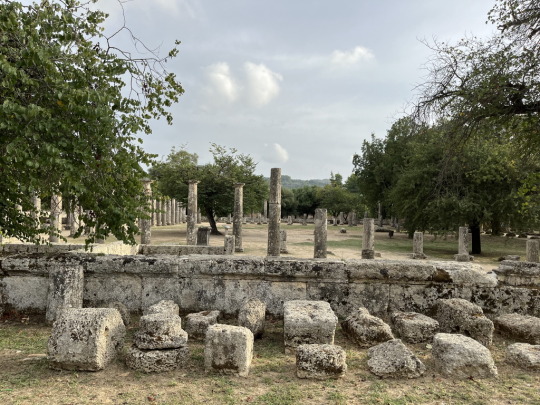
Zwischen all den Säulen und Mauern fühle ich mich recht schnell in eine andere Zeit versetzt und kann ich mir gut vorstellen, wie die Menschen in ihren langen Gewändern durch die Tempel und Hallen geschritten sind.
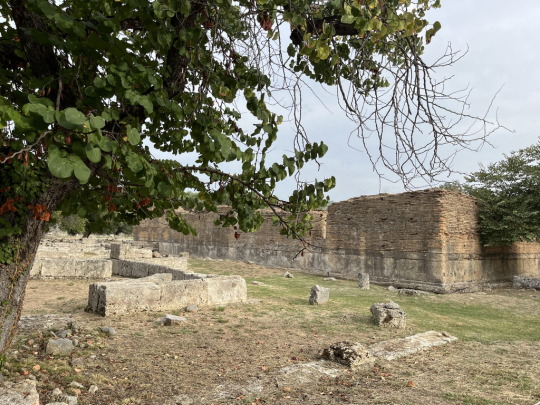
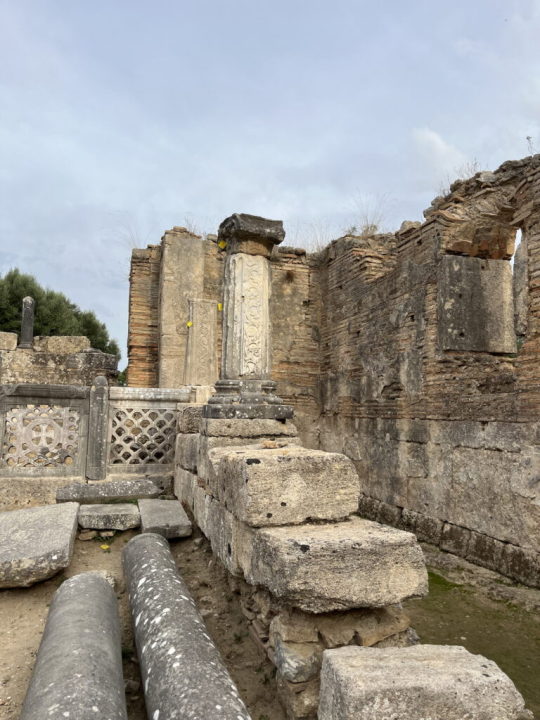
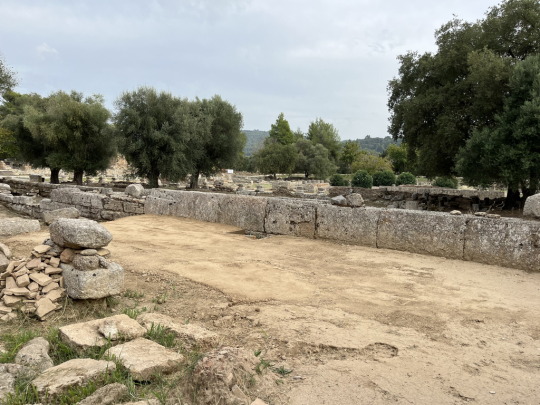



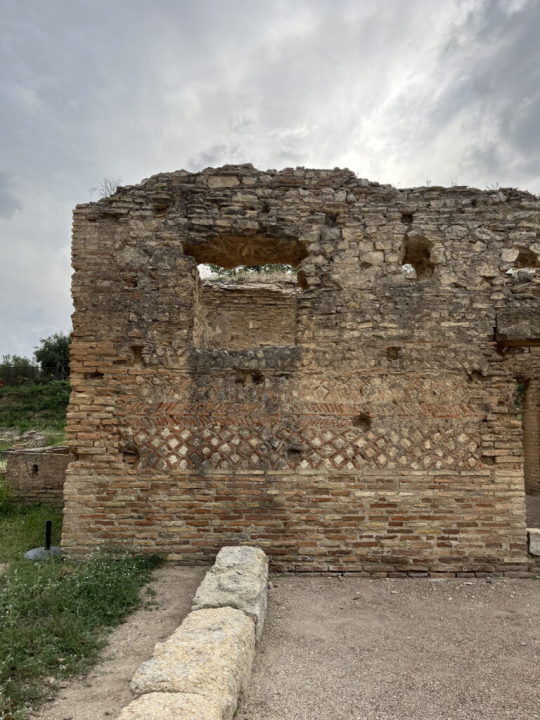

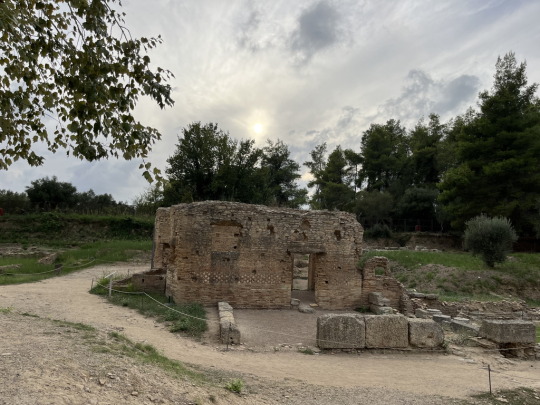
Es ist still hier in der großen Stadt und duftet nach südländischen Bäumen. Dazu ist es angenehm warm. Das Gelände ist fast unüberschaubar, ich komme vorbei an weiteren Tempeln, Gästehäusern mit Brunnen in den Innenhöfen und an Thermen.
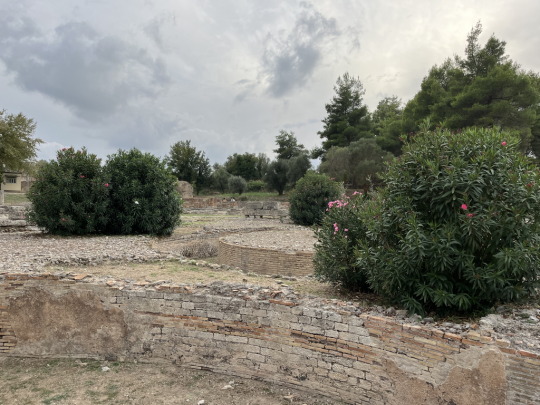
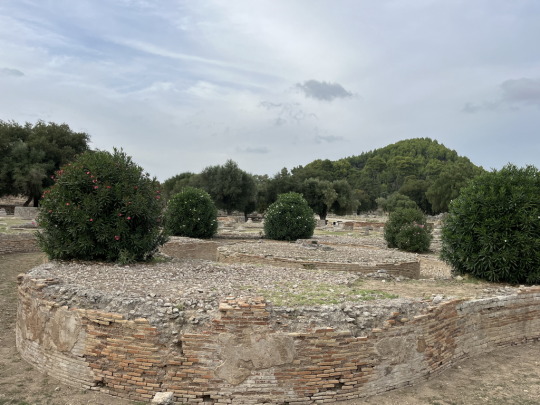
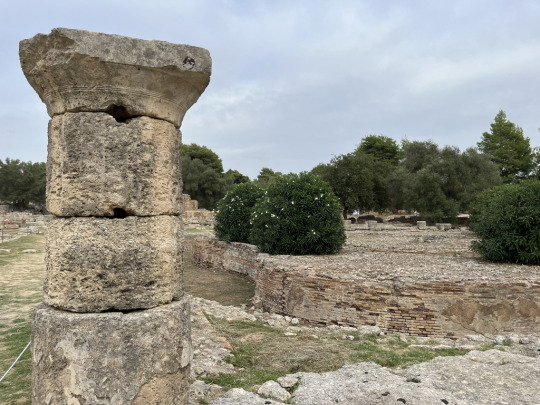
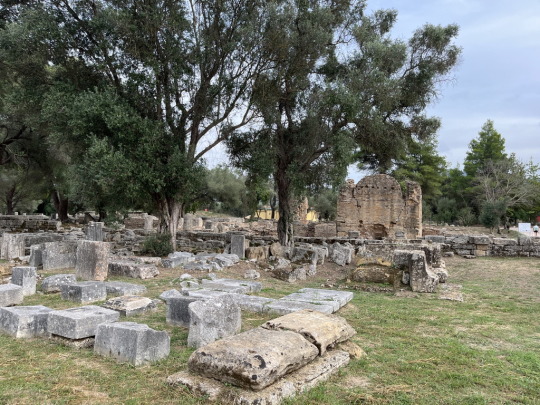

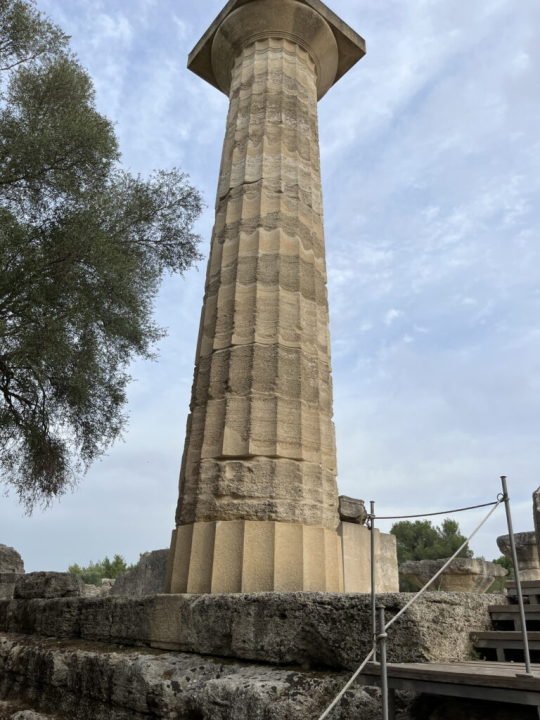

Die Sonne neigt sich langsam und die Stimmung wird immer zauberhafter. Ich suche das Stadion und entdecke schließlich am Rand des Geländes den Eingang. Es sind wenige Besucher unterwegs und ich muss eine Weile warten, bis sich einer der jungen Männer auf die Laufrunde begibt.





Die Wolken verzaubern den Himmel und ich gehe schnell zu den Tempeln zurück.


Wie ich gehofft hatte, kann ich einen Sonnenstrahl über einer der Säulen einfangen. Hier in diesem Gebiet befinden sich das Philippeion und die Monumente des Ptolemäus.




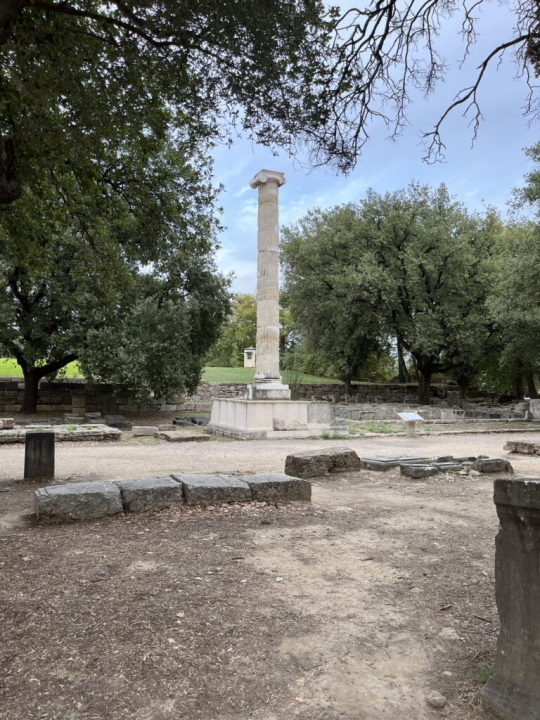

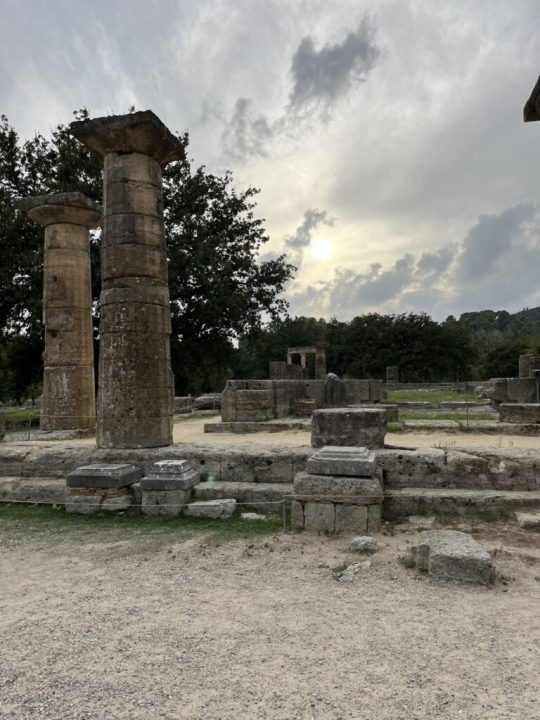
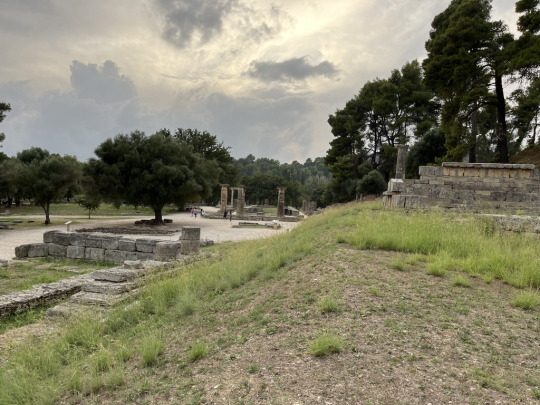
Noch eine Genuss-Runde durch diesen antiken Kurpark, dann begebe ich mich Richtung Ausgang.
Resümee
Die antike Stätte von Olympia mit dem Heiligtum des Zeus hat ihren Zauber, der heute über den Ruinen der Tempel liegt, nicht verloren. Kaum hat man das große Gelände betreten, drehen sich die Epochen wie von selbst zurück. Man sollte auf jeden Fall ausreichend Zeit mitbringen, um mit Muße bei einem ausführlichen Rundgang die Stimmung einfangen und genießen zu können. Wer sich fit genug fühlt, kann eine Laufrunde im weltberühmten Stadion absolvieren. Das Freigelände wird bei Sonnenuntergang geschlossen, die benachbarten Museen mit den Ausgrabungsschätzen haben eine Stunde länger geöffnet. Bei einem Besuch in Olympia kann man einen erholsamen und ungeheuer interessanten Ausflug in die Geschichte erleben. Ich übernachte gleich nebenan und Olympia verabschiedet sich von mir mit einem fantastischen Sonnenuntergang.

Die gesamte Tour go-south 3.0 ist hier beschrieben. Hier gehts zu meinem Welterbe-Projekt. Der Umbau meines Dacia Dokker als Minicamper ist hier detailliert nachzulesen. Dobbys Einrichtung und Ausstattung hat sich auch in diesem Herbst und seinen Gewittern bewährt. Meine Übernachtungsplätze habe ich wieder auf park4night gesucht und unter 5Reisende bewertet. Die zusammengefassten Länderkarten gibt es hier. Read the full article
#Abenteuermobil#Abenteuerreise#Albanien#alleinunterwegs#Alleinreisen#Ausbau#Ausrüstung#Autoreise#Besichtigung#BosnienundHerzegowina#Camping#Camping-Mobil#Dacia-Dokker#DIY#Dobby#Erfahrungsbericht#Erkundung#Europa#Hochdach-Kombi#Inspiration#Kroatien#Leichtbau#Minicamper#Montenegro#Olympia#Parkplatz#Reisebericht#Reisefotografie#Reisetagebuch#Reiseziele
0 notes
Text

2 notes
·
View notes
Text
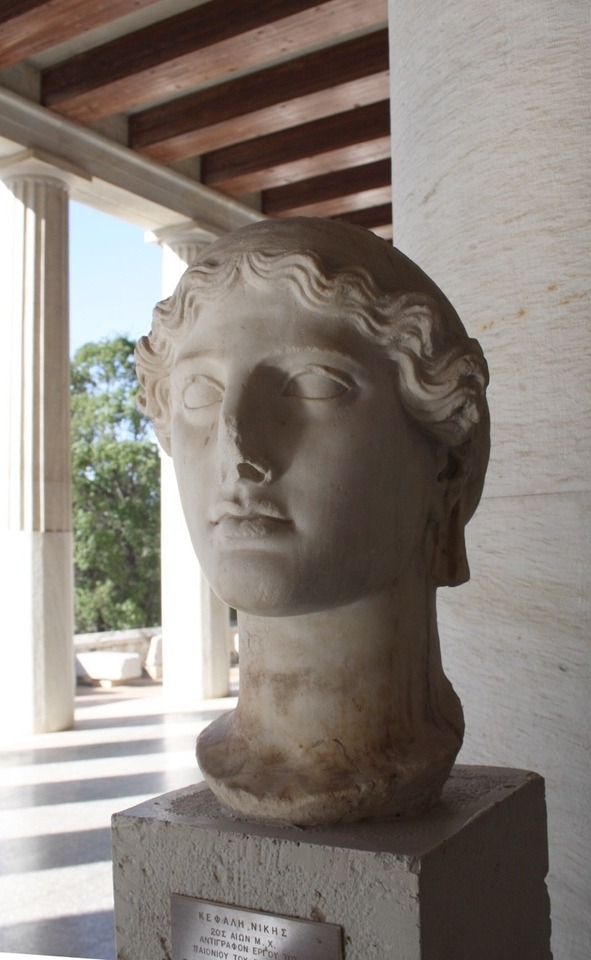
Head of the Nike of Paionios, 2nd century Roman copy of the Greek original, at the Agora Museum in Athens.
#roman copy of greek statue#ancient rome#roman art#ancient greece#ancient greek art#nike#nike of paionios#2nd century#roman statue#agora museum#athens
145 notes
·
View notes
Text

Nike of Paionios
* late 5th century BCE
* Parian marble
* height: 216 cm
* Archaeological Museum of Olympia
Source: Joanbanjo, CC BY-SA 3.0 <https://creativecommons.org/licenses/by-sa/3.0>, via Wikimedia Commons
168 notes
·
View notes
Text



You’ve heard of Nike, but now get ready for… YIKE! While her sister supports relentless pursuit of victory, she wholeheartedly supports your urge to get the HELL out of here.
Stickers and prints at: https://www.redbubble.com/shop/ap/124238929
#Nike#Greek mythology#Greek myth#Greek god#Greek goddess#meme#artists on tumblr#classics#tagamemnon#my art#art#classics memes#ancient greece#greek mythology
186 notes
·
View notes
Text
The 10 not-to-miss Archaeological Sites in Greece
In the aftermath of the fire that passed right through the archaeological site of Mycenae (fortunately the site wasn’t irreparably destroyed, it was mostly smoked) here are 10 of the most important / standard archaeological sites to see in Greece. These aren’t even a tenth of the sites Greece has to offer, neither are recently discovered important sites that have yet to open to the public included in this list, but this is the list of the places to get started from, either because they are very informative or because they typically attract the majority of tourists.
1. Acropolis, Athens
The standard first stop of every tourist arriving in Greece and yet, Greeks frequently fall into two categories; those who see it every day and those who have yet to visit it. On the Acropolis (which means Edge of the City) one can see the Propylaea (the monumental gateway), the Temple of Nike, the Erechtheion with the Caryatids, which is a temple dedicated to both Athena and Poseidon and, lastly, the Parthenon which is the most important landmark of Greece. Parthenon was the temple dedicated to Athena, the patron Goddess of Athens. A walk to the Acropolis should be ideally combined with a visit to the New Acropolis Museum nearby.
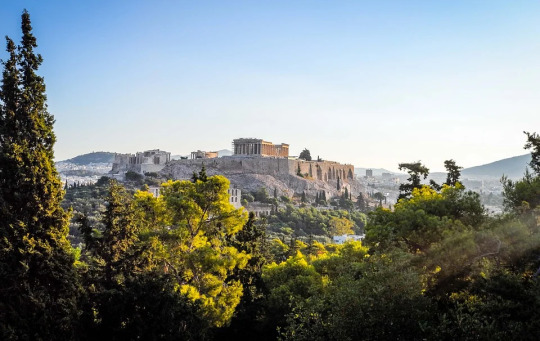
2. Delphi, Phocis
The archaeological site of Delphi is located at Phocis, nestled in Mount Parnassus. It is a shrine dedicated mostly to Apollo and this was also where the most famous oracle of antiquity functioned. Nowadays, the visitor can see the ruins of Apollo’s Temple, treasuries from various cities, the most important one being that of Athens, the ancient theater, the ancient gymnasium, the Castalian spring and the Tholos of Athena Pronaia. The exploration is not complete without a visit to the Museum of Delphi.
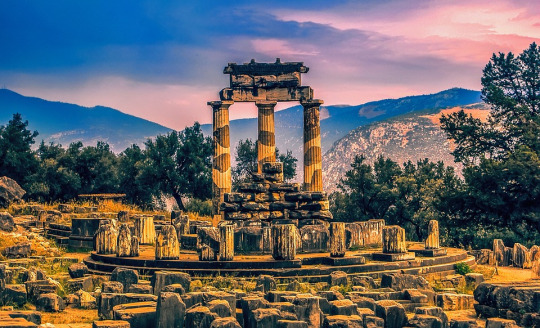
3. Ancient Olympia, Elis
This is where the Olympic Games were founded and took place. Nowadays, it is still the location where the Olympic Flame is lit every four years. Afterwards, the Olympic Flame travels from Olympia around Greece, then it arrives to the Panathenaic Stadium in Athens and from there it travels to the previous and then the next host city of the Olympic Games. Visitors there can see the ruins of the temple of Zeus, the temple of Hera, the Stadium, the Palaestra (the wrestling school) and much more. The beautiful statues have been removed from the site and are exhibited in the Museum of Olympia. There you can also see the famous Nike of Paionios and Hermes of Praxiteles.
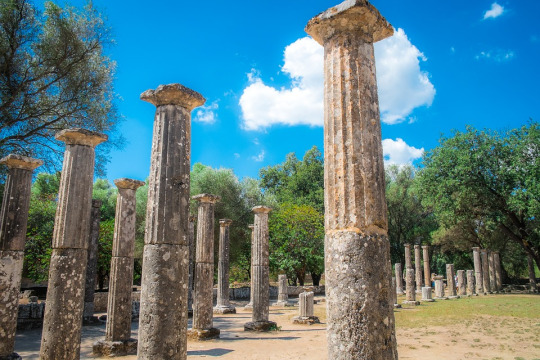
4. Knossos, Heraklion
Knossos was the capital of the Minoan civilization (3000 - 1400 BC) in Crete. The palace of Knossos is associated with numerous Greek myths, such as those of Theseus and the Minotaur and Daedalus and Icarus. The site is notable for its exquisite frescoes that are both beautiful and very informative about the era. The throne hall and the storage rooms are impressive, especially if you consider that this is the first throne room of Europe.
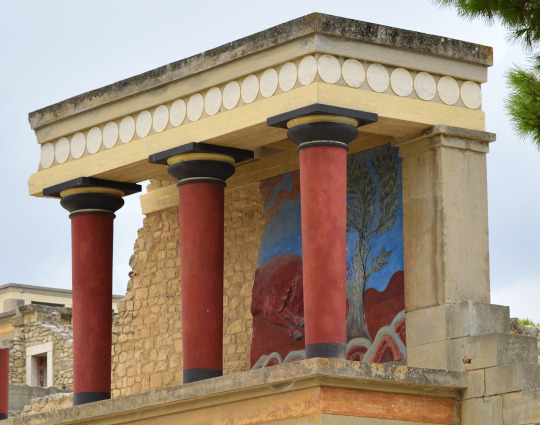
5. Mycenae, Argolis
Let’s go to the smoked impressive sweetie.The Mycenean civilization flourished right after the Minoan and its base was Mycenae, in mainland Greece. Its most notable king was Agamemnon, who made his way into the Homeric epics and the Greek mythology. At Mycenae visitors can see the Lion Gate, the impressive royal tholos tombs, the king’s halls and much more.
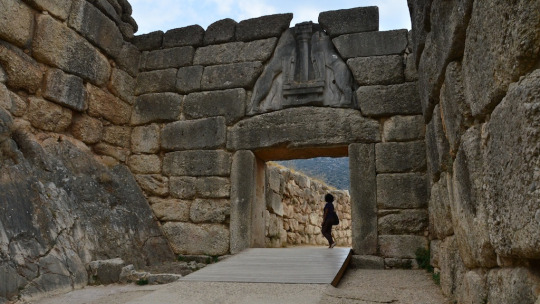
6. Vergina, Imathia
While Alexander the Great’s tomb remains a world mystery, his father’s King Philip fortunately is not (99% at least). In Vergina visitors can see the unplundered royal tombs and the palace as well as the artifacts of great importance found in them.
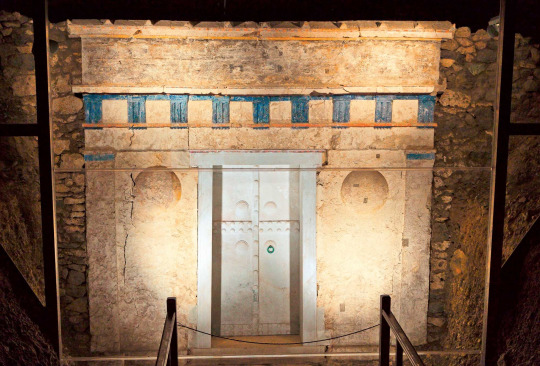
7. Temple of Poseidon, Cape Sounion
The temple of Poseidon attracts many thousands of visitors annually. Built on the edge of the cliff above the sea, it creates idyllic conditions for photographs, especially at night with full moon.

8. Messini, Messenia
Messini in Peloponnese is one of the best preserved ancient cities in Greece. One can clearly see the gymnasium, the theater, the stadium, one of the two city gates, the fountain of Arsinoe and many more structures / buildings. Just next to the site is the archaeological museum with all the findings that complete the visitor’s impression of the place.
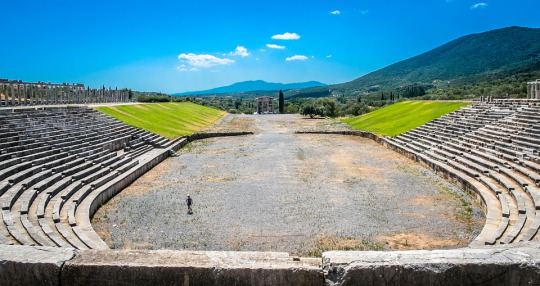
9. Lindos, Rhodes island
On a hill next to the sea in the south of Rhodes you can visit the Acropolis of Ancient Lindos and the temple of Lindia Athena. Much later in time, a medieval fortress was built around the ancient acropolis, making the site even prettier.

10. Epidaurus, Argolis
The most famous theater of antiquity and one of the best preserved. It’s worth a visit not just for the archaeological site itself, but also for its wondrous acoustics. Besides, the theater still operates and certain theatrical plays take place there, where you can attend and feel like you belong to an ancient audience.

#greece#europe#ancient greece#athens#acropolis#sounion#attica#delphi#central greece#epidaurus#messini#ancient olympia#mycenae#peloponnese#crete#knossos#lindos#dodecanese#macedonia#greek culture
293 notes
·
View notes
Text

Head of Nike
Roman copy of the 2nd century AD after a Greek original attributed to Paionios.
- Ancient Agora Museum, Athens.
216 notes
·
View notes
Text
Athens 1896

Obverse: Zeus holding Nike. Reverse: The Acropolis of Athens
Athens 2004

Obverse: Nike of Paionios with Panathenaic Stadium and the Acropolis of Athens in the background. Reverse: The Olympic Flame, the opening lines of Pindar's Eighth Olympic Ode, and the Athens Games logo
10 notes
·
View notes
Text

The Nike of Paionios on the front of the Olympic medal for the 2004 Olympic Games held in Athens, Greece
4 notes
·
View notes



